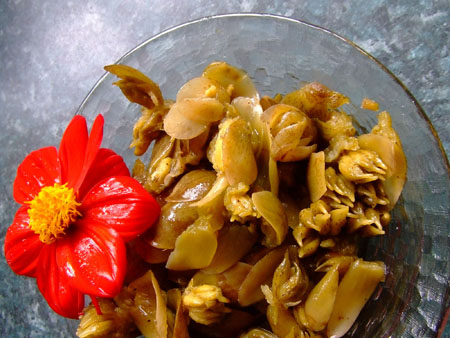After living in South Africa for almost ten years, I have come across a lot of weird and wonderful dishes in some of our restaurants. Crocodile meat and Biltong Salad are just two of them. Waterblommetjies is another weird concoction. Not one of my favorites, but definitely still popular at many restaurants, this ingredient is not something of the ordinary.
Waterblommetjies are a ‘water lily’ type flower used somewhat like a vegetable in South African food. Some say that these flowers were used in the past by farmers as vegetable substitutes when their plantations failed to produce enough vegetables. They were also planted in dams to remove algae and improve water quality.
While other countries may use spinach, carrots or tomatoes in soups and meaty stews or casseroles, South African dishes often include Waterblommetjies.
This flower was introduced to culinary dishes approximately twenty years ago. Also known as an aquatic herb, the Waterblommetjies grows wild in the Boland Region in the Western Cape, which has long been one of the six flower kingdoms around the world.
Attracting attention as they float above the water, these herbs have green and red leaves, black spots and smell of vanilla. The flower, itself, is a creamy white, which contrasts against its other bright colors.
Once the flower is cooked, it looses its structure and becomes soft, loosing its petals at touch. Cooked waterblommetjies resemble thinly sliced cocktail gherkins, in colour and texture. Yet the flower itself is not as firm and falls apart easily.
The name Waterblommetjies is derived from the Afrikaans word for ‘small water flower'. Traditionally, this stew is made of meat, mainly lamb, and then the flower gets mixed into it. When cooked, it turns green and has a bit of a ‘marshy’ taste to it. An acquired taste, a cooked Waterblommetjies is yellowy dark green, a bit slimy and gives off a pond-like smell. Nevertheless, they complement meat dishes perfectly, giving dishes a balance in salty, sour and savory flavors, with a hint of vinegar.
Waterblommetjies are freely available in the shops in South Africa and are mostly found packed in a tin. They don’t come cheap, at round 35Rand a tin, and remain a rare, unique taste.
